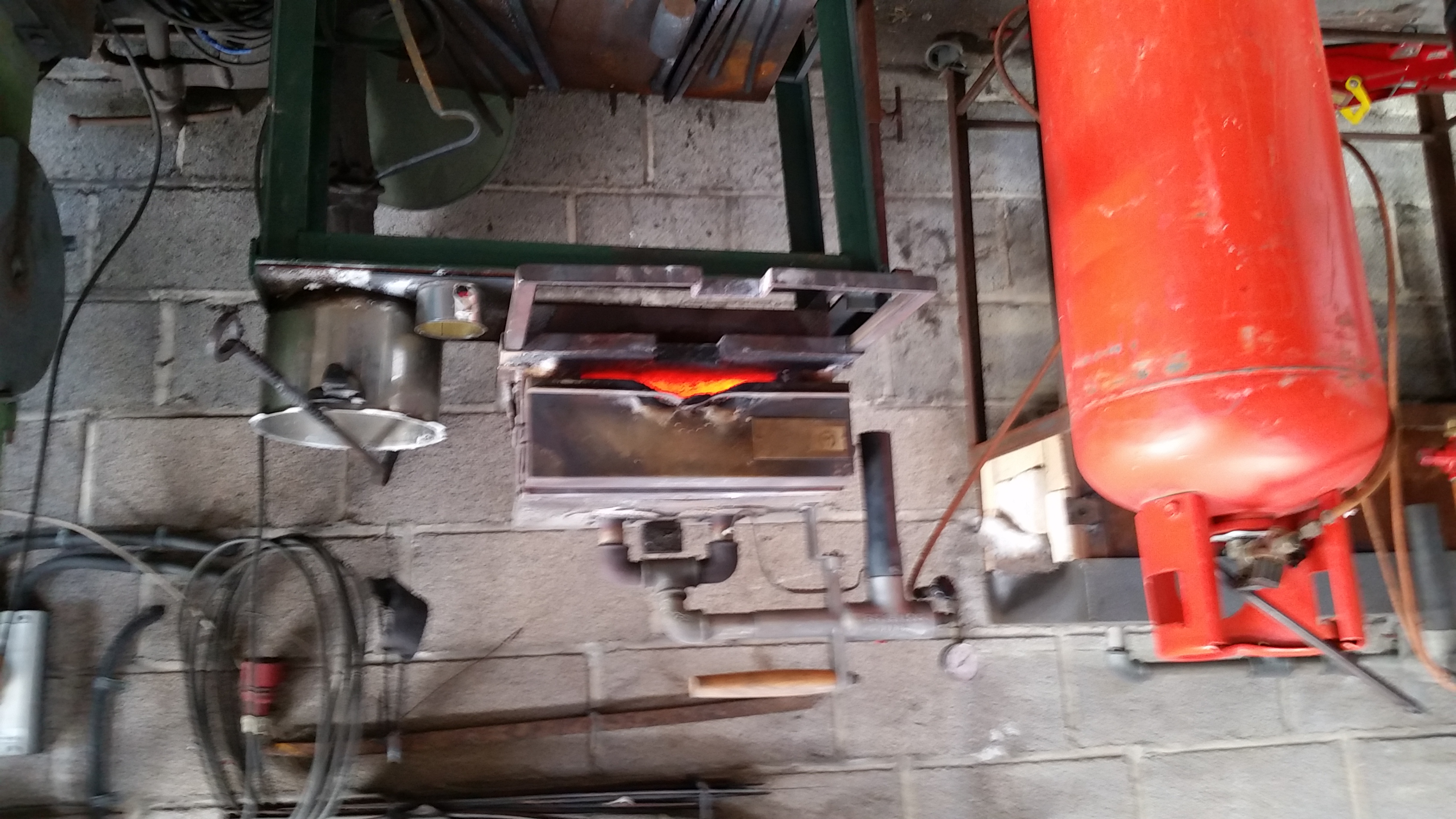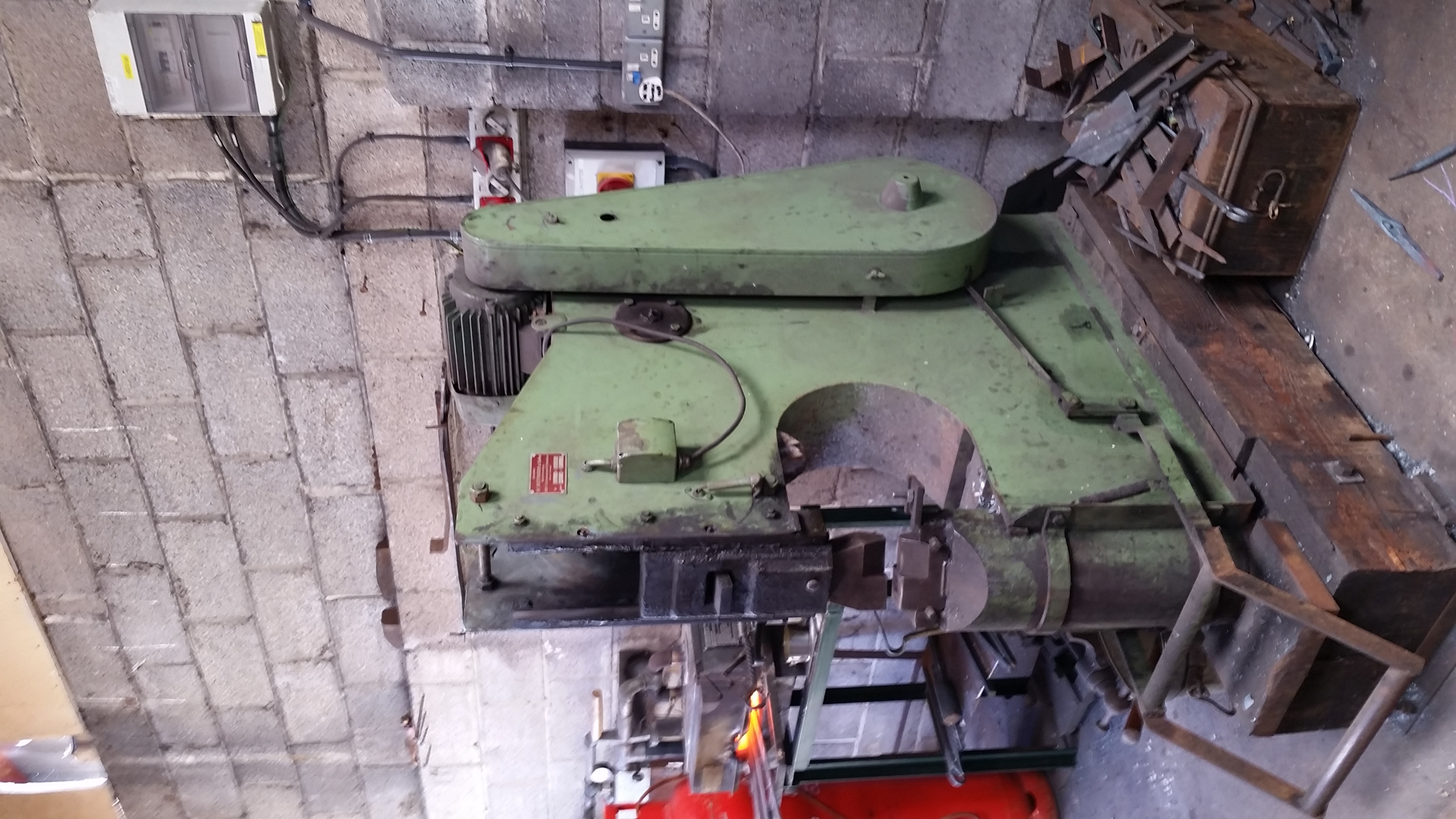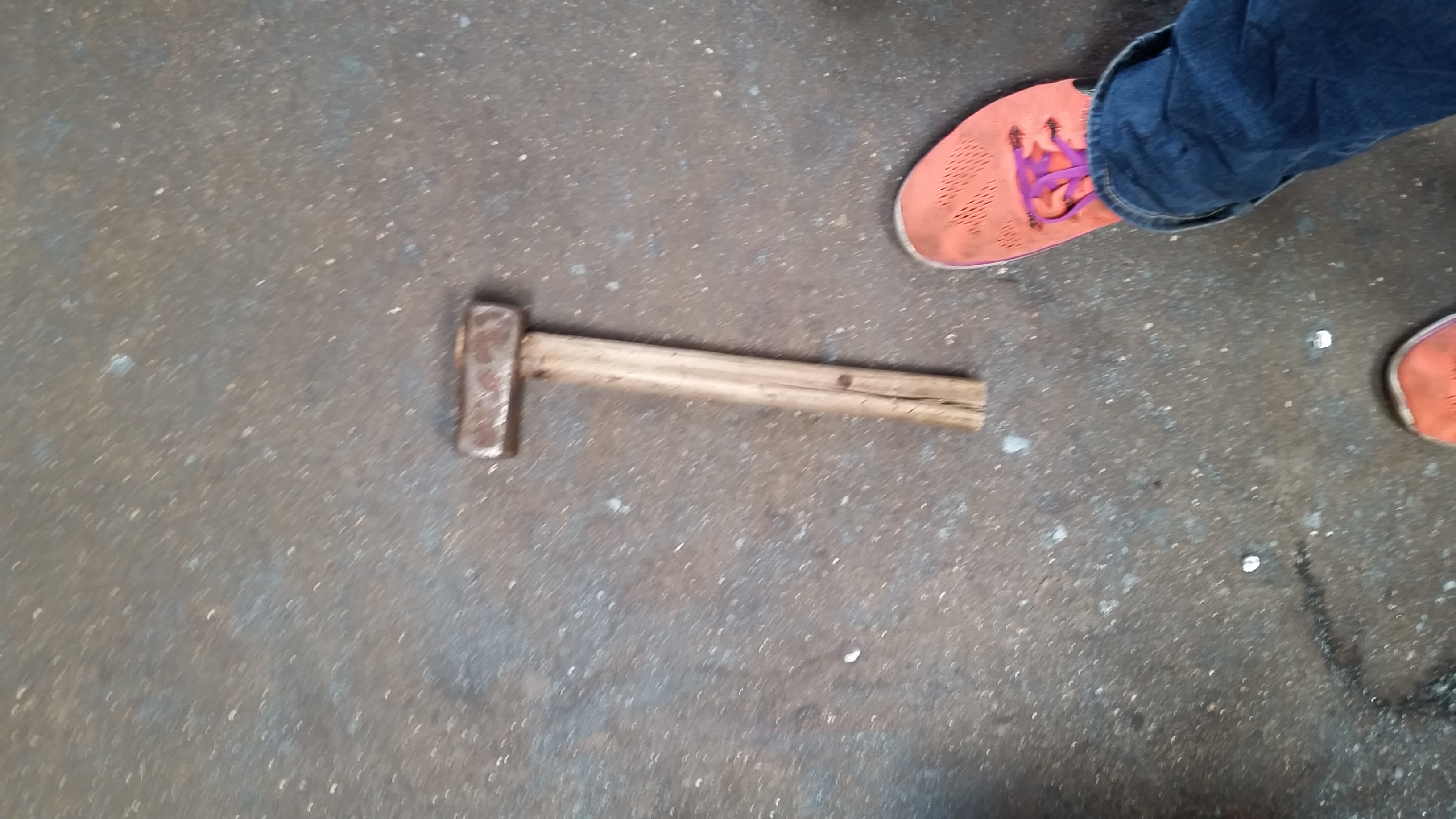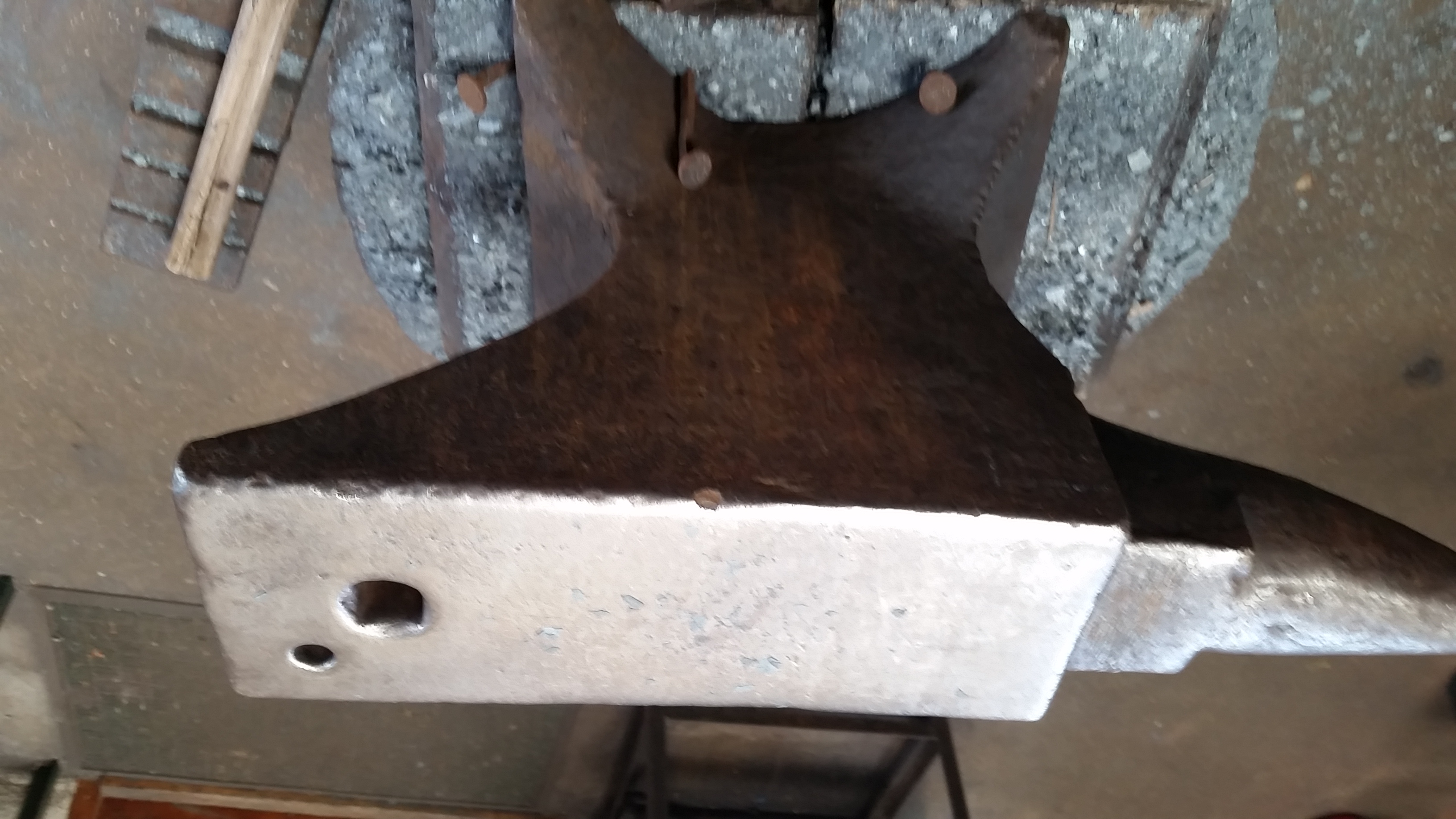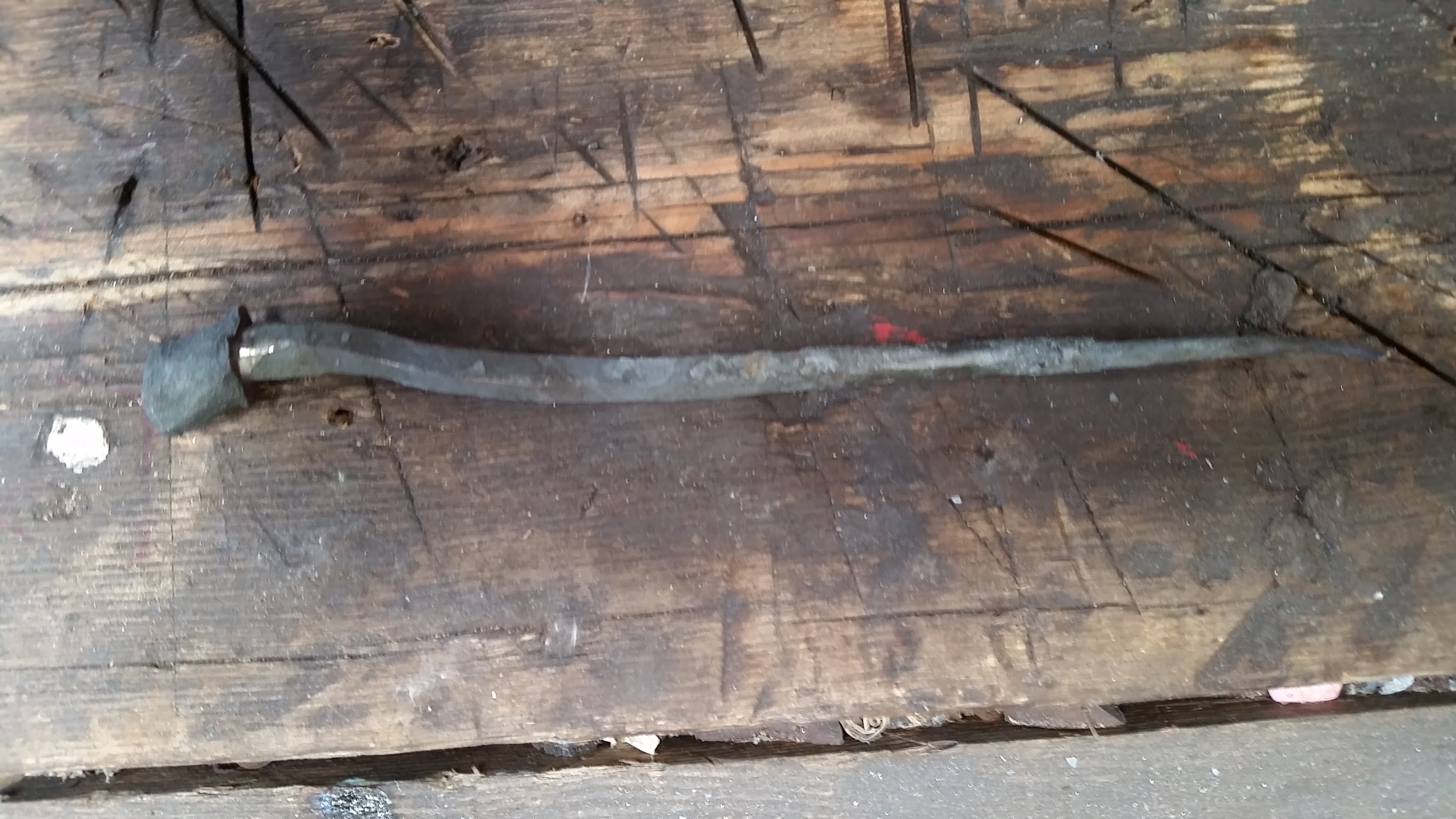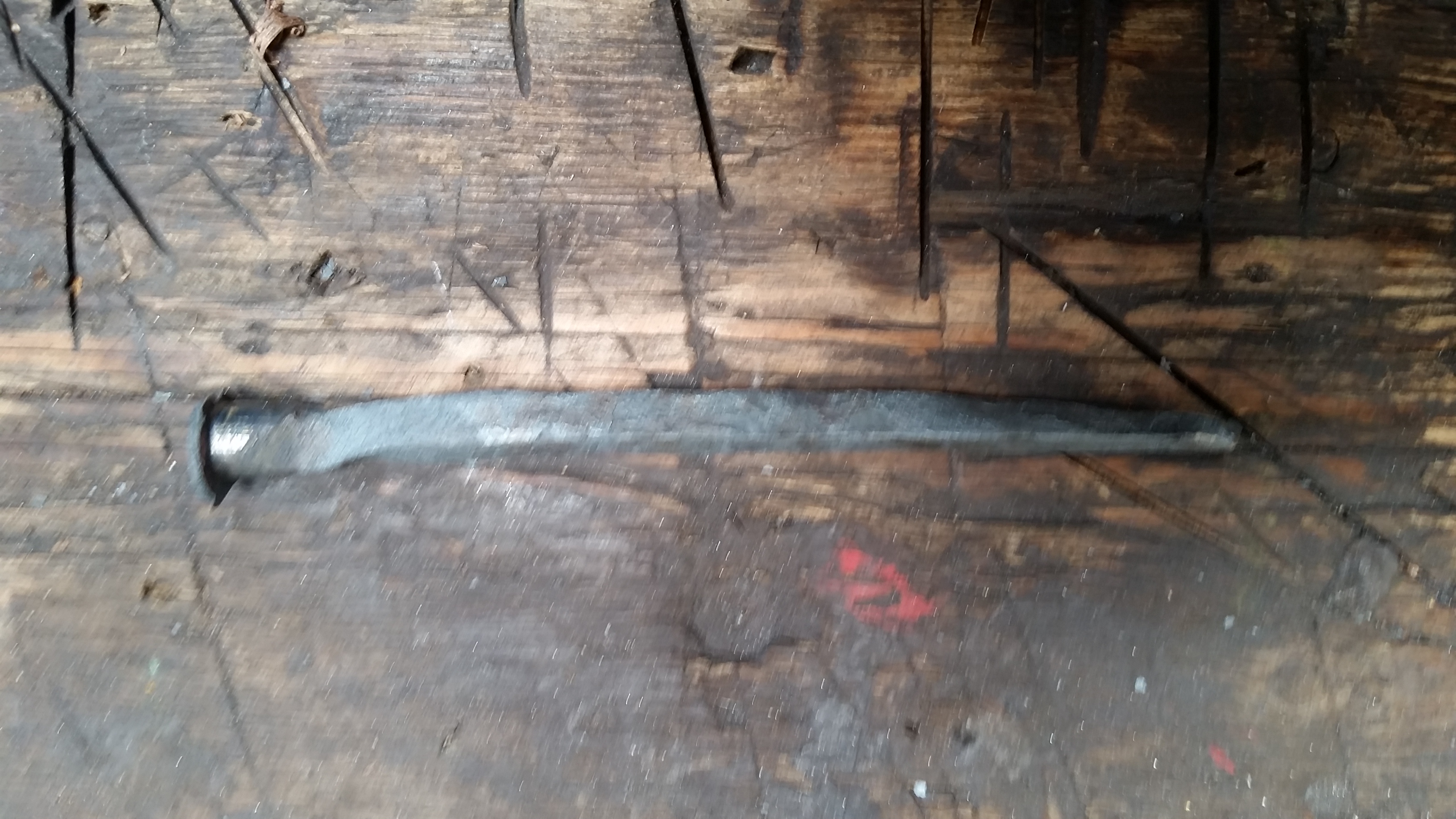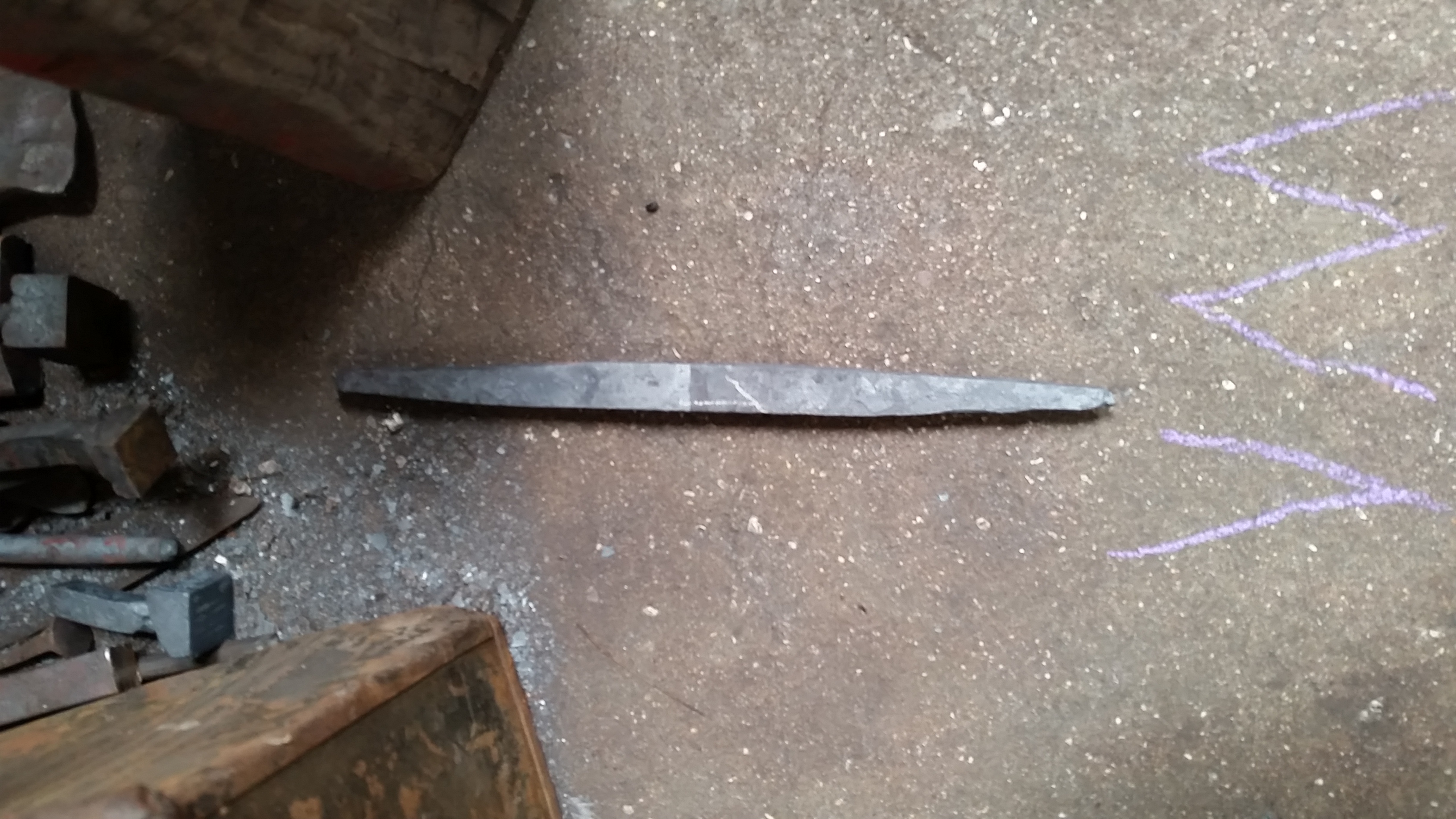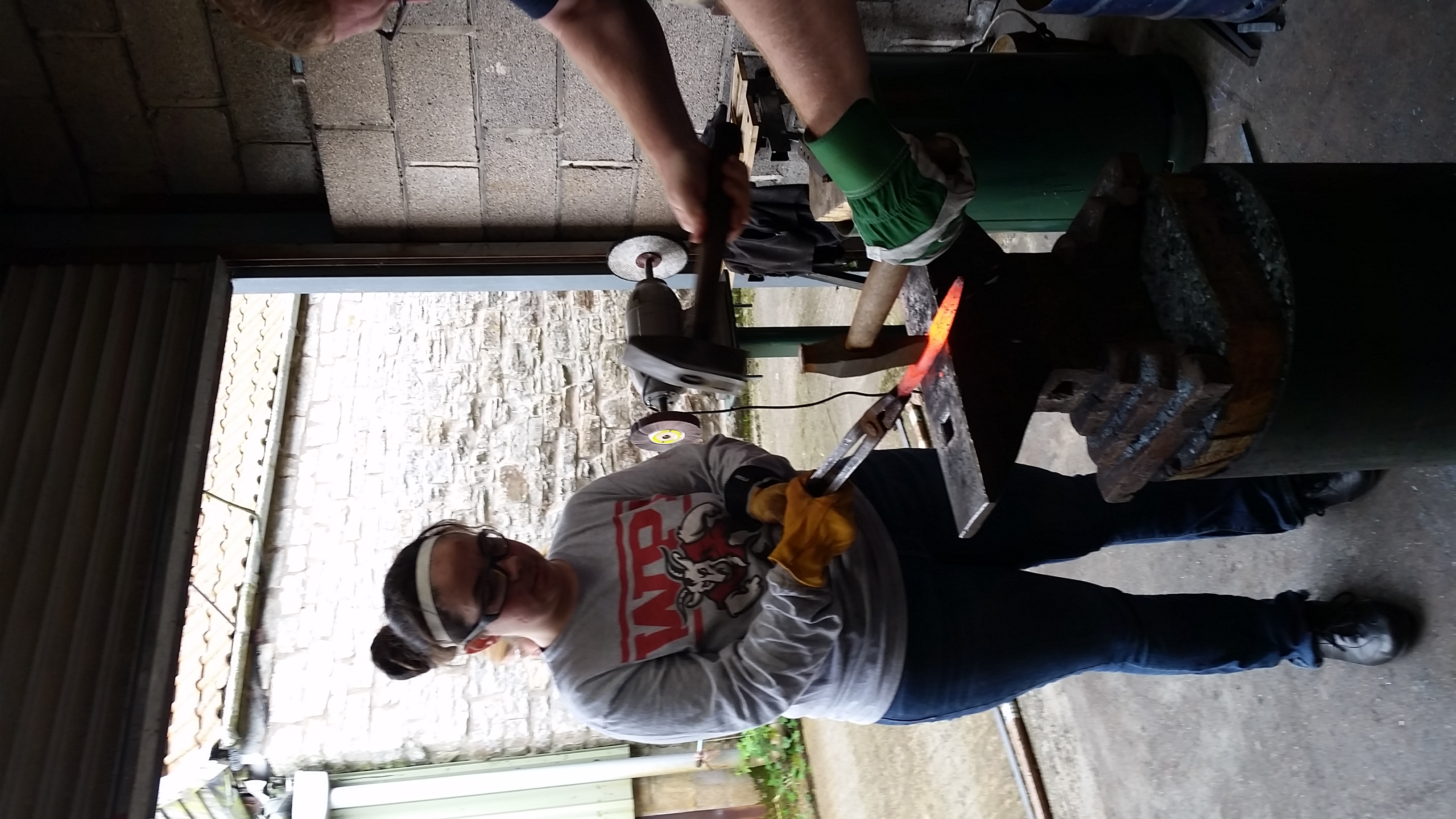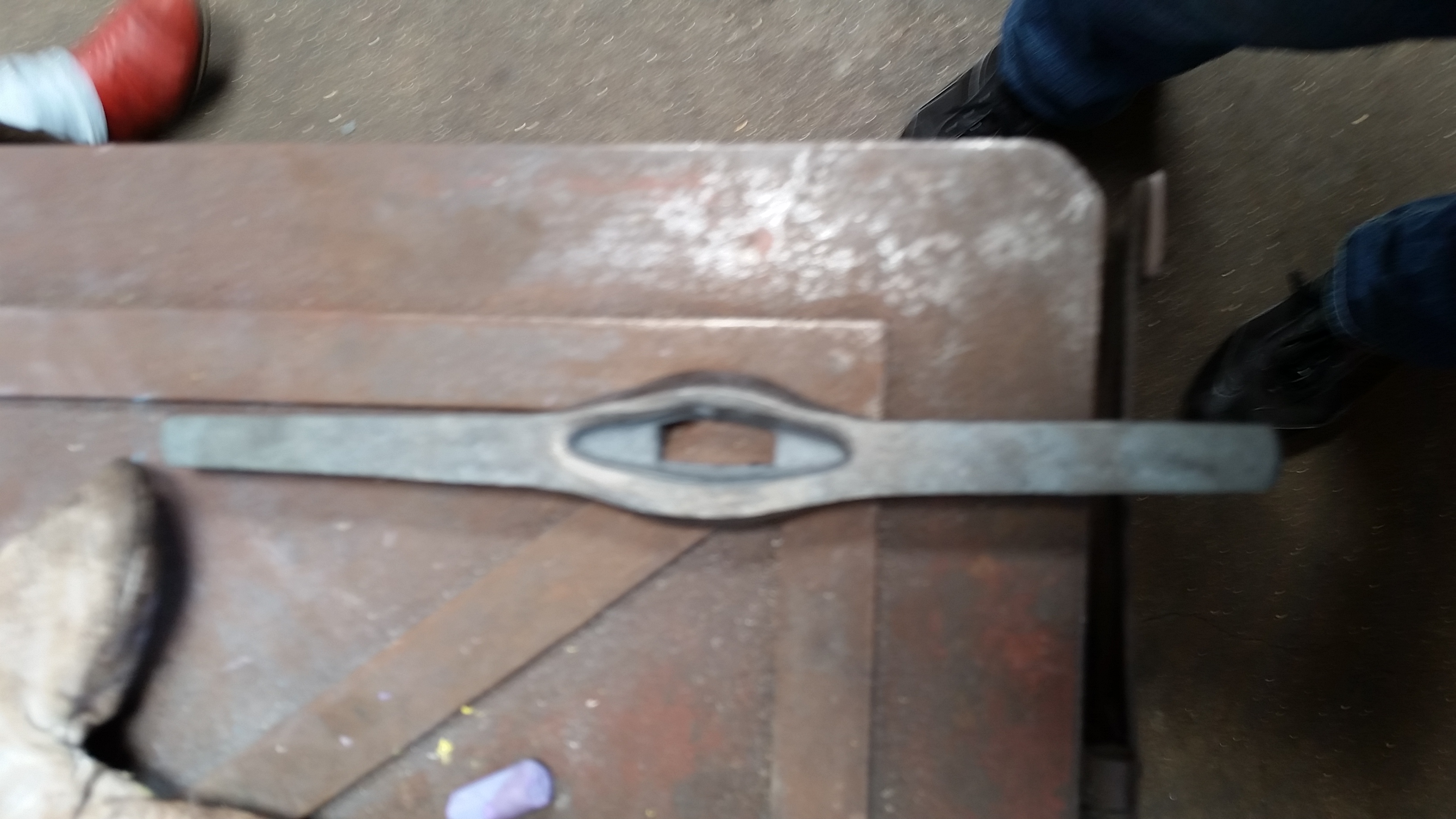Difference between revisions of "The Crafting of A Sword"
From Londonhua WIKI
Vnmercouris (talk | contribs) (→Subsection 2) |
Vnmercouris (talk | contribs) (→Abstract) |
||
| Line 13: | Line 13: | ||
=Abstract= | =Abstract= | ||
| − | The | + | The goal of this project was to take a look at the process of crafting a sword. While blacksmithing used to be a very important job in medieval times its importance has diminished in today's present society due to the invention of factories and machine production. Looking at today's society it is incredible to see the blacksmithing community still thriving, while not at much in a production sense but in a historical one. While the blacksmiths do use some modern technology much of the crafting process is still done by hand as it was done in medieval times. For this project, I went through the process of crafting my own sword to be able to experience what it feels like to be a modern blacksmith. |
| − | <br> | + | <br> |
| + | |||
=Introduction= | =Introduction= | ||
<br> | <br> | ||
Revision as of 17:42, 22 June 2017
Title of this Milestone
by V.J. Manzo
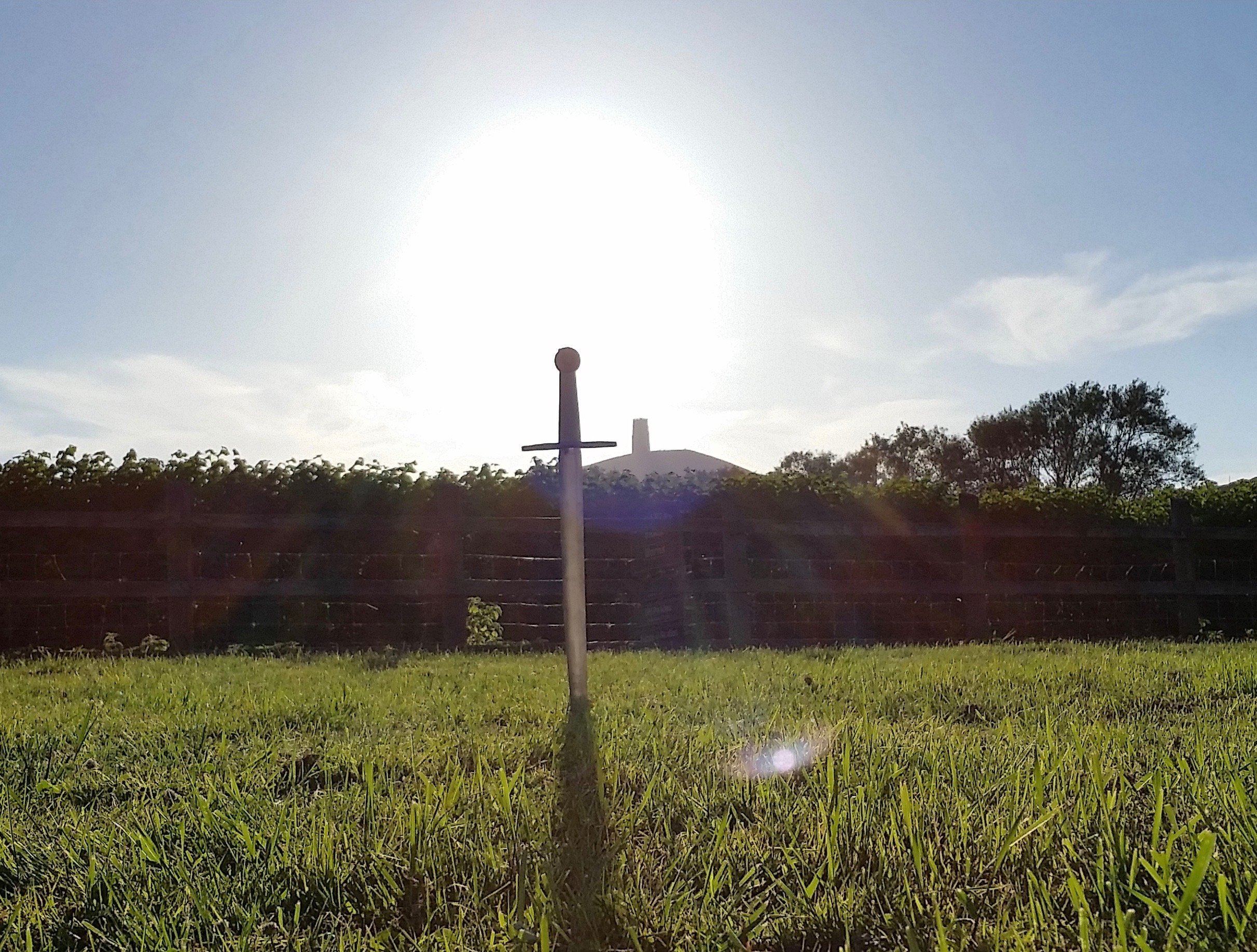 My finished sword |
Contents
Abstract
The goal of this project was to take a look at the process of crafting a sword. While blacksmithing used to be a very important job in medieval times its importance has diminished in today's present society due to the invention of factories and machine production. Looking at today's society it is incredible to see the blacksmithing community still thriving, while not at much in a production sense but in a historical one. While the blacksmiths do use some modern technology much of the crafting process is still done by hand as it was done in medieval times. For this project, I went through the process of crafting my own sword to be able to experience what it feels like to be a modern blacksmith.
Introduction
I suggest you save this section for last. Describe the essence of this project. Cover what the project is and who cares in the first two sentences. Then cover what others have done like it, how your project is different. Discuss the extent to which your strategy for completing this project was new to you, or an extension of previous HUA experiences.
Section 1: Background
Now you're on your own! Your milestone must include a thorough and detailed background section with detailed subsections; if additional articles are required to be referenced in this background section, create those as well and link to them (the creation of all pages is tracked by the wiki site and attributed to your username). Remember to use rich multimedia whenever possible. Consult the Help page as needed! Remember, if you don't see an article on this site that is an integral part of your project, create it! Your entire page-creating/page-editing history factors into your overall grade.
The Role of A Blacksmith
During the middle ages blacksmiths played a very important role in the community. They were in charge or crafting weapons, armor, keys, chains, and tool that any town would need. A blacksmith had tools similar to a goldsmith in order to melt and combine different metals and then shape them into the desired object. A blacksmith was required to have a large amount of knowledge and experience not just on shaping metal but also its composition. What types of metal an object was made of was very important to it's hardness, strength, and toughness. By manipulating the composition of metal a blacksmith could create the right combination so the object created would shatter or bend. While becoming a blacksmith require a lot of time in an apprenticeship, the end goal was well worth it due to the blacksmithing guild being very profitable from the wide variety of objects that they made.
While blacksmithing used to be the center of manufacturing in the middle ages, the same can not be said for modern day society. With new materials such as plastic and carbons fiber, plus the many factories that pump out products faster than any person could craft by hand the necessity for blacksmiths have become none existent. The question then is why can they still be found and how do they make their living. Many people now are fansinated by the power that is felt from crafting objects with their hands. There is also a connection that people can feel while crafting to the blacksmiths that came before them. Many modern day blacksmiths make a living off of selling their functional or ornamental creations, at either medieval festivals or on the internet. Others also make money by holding classes teaching what they know to other people who are interested. There are some blacksmiths that specialize in making blade, or bladesmiths and they can make thousands of dollars selling quality products. Ray Rybar of Finleyville, Pennsylvania is one of the bladesmiths that als ospecialializes in pattern-welded blades commonly called "Damascus". Damascus blades are generally made of two or more layers of metal that are forge-welded into one bar. Rybars has had such sucess with his blade that he was able to sell one for $75,000. Backsmiths are also very involved in museum work and historical reproduction. While this doesn't pay much it is good for those that have a historical interest in what they are crafting. A common source of jobs for blacksmiths in New England is the restoration of historical buildings. A shop that specializes in historical reproductions might create 40,000 nails for a kitchen that was being reconstructed, reproductions of historical accurate swords, cooking implements, hinges, or locks.
The Process of Becoming a Blacksmith
The system in place for training new blacksmiths during medieval times was an apprenticeship under a master. What not many people realize is that this still continues in today's society, blacksmith apprentices can spend anywhere from five to eight years learning on the job under a master blacksmith. The work is full time and the pay ranges from $9.50 to $25 an hour. While this is still an option it is not the only one available in order to learn the craft. In Southwestern Pennsylvania there is a school called Hart Moore Blacksmith Studio that teaches groups of students. This school serve less as a place to officially teach the craft and more as one to satisfy curiosity that people might have about the blacksmithing experience. Another learning opportunity it through conferences held by blacksmiths' associations. Conferences are a major opportunity to gain new skill as professionals from all around the world gather to demonstrate their techniques. There is also a blacksmithing and metalsmithing program at Southern Illinois University at Carbondale. This university is the only one in the United States that offers a graduate degree in blacksmithing.
Tools of the Trade
Anvil - Usually made of from a cast of low-carbon steel with a higher carbon steel face welded to onto the body. This tool serves as a surface on which an object being forged is struck. When a hammer hits on side of the object with a certain amount of force the anvil should rebound that same amount of force onto the other side of the object.
Quenching Tank - A tank that contains oil or other hardening mediums used in the heat treatment of blades. It can also just serve as a way to rapidly cool a piece of metal so that it can be quickly touched.
Hammer - A heavy hammer that is used in combination with an anvil to forge metal.
Hardy - A metal working tool that fits inside a square hole in the anvil. It usually refers to a chisel that when hot steel is hammered over will cut the steel.
Wire Brush - A tool that is used by blacksmiths to brush away any hammer scale that may appear on the piece being worked on.
Spring loaded Press - A large machine with different heads that can be attached. It is good for making fast and even hammer blows.
Forge - A hearth used for heating metals to different temperatures so that they can be worked on. Two common types of forges include ones that run on propane or coal. A propane forge is easy to regulate the temperature of as it is just controlled by how much propane is being used. This type of forge doesn't make as much of a mess as a coal forge and is good for when trying to work on many pieces at once. A cool for though is much larger and is ideal for heat tempering as the entire piece needs to be heated evenly which can be hard to do with propane.
Swage Block - A large, heavy block of cast iron, or steel that is made up of many different sized shapes. A block can be used to bend, cut, punch and form a hot piece of metal with the use of a hammer.
Section 2: Deliverable
In this section, provide your contribution, creative element, assessment, or observation with regard to your background research. This could be a new derivative work based on previous research, or some parallel to other events. In this section, describe the relationship between your background review and your deliverable; make the connection between the two clear.
Daily Jornal
Tuesday June 13, 2017 – Day 1 at the Forge
Before even starting to craft our swords we spent some time going over the basics of blacksmithing. In order to be able to smith items the material that you are working with has to be hot enough. This can be determined by the color of the metal when taken out of the forge. If the material is red hot then it can act like play dough and can be shaped, when if starts to get cooler it is then considered cold. Trying to strike cold metal can be bad for several reasons, the first is that when you strike it will not change shape at all, the only thing that happens is that it causes stress to your arm. The other issue is that steel is made up of a bunch of crystallized structures, that when red-hot will rearrange, but when the steel is cold the crystallized structures start to shear and the whole piece that is being worked on will break. In total Richard, our forge master, told us that there were 8 basic technics. We learned the first 5 by crafting steel nails from a rod. The first technic consisted of creating a square point on a round rod. I was able to do this by hammering the tip of the rod on the anvil with my hammer at a 45-degree angle. After a couple of swings on one side, I then rotated the rod 90 degrees and hammered again. The next technique I learned was cornering which connects the square part of the rod with the round part to form a nice corner. I struggled a lot with this technique because in order to do it I had to line up the edge of my hammer with the edge of the anvil and I had trouble keeping them lined up while hammering. Following the cornering technique was drawing. This was all about stretching the nail out my making in thinner and was applied from the square end of the corner to the point until the nail fit into a provide template hole. After that, we cut the nail using a hardy, which was placed in a hole on the anvil. To cut the nail off the rod gets placed on the blade of the hardy about a half an inch from the top of the rounder side of the corner. The rod gets hammered and rotated till there is only a thin core left in the middle. Then the rod goes back into the forge one last time where it needs to get extremely hot. Once at the right temperature, the nail then gets put back into the template whole which then gets wiggled around until the nail breaks lose, the final technique is to make the hear of the nail. While the nail is still very hot and in the template hole you hammer the head as dead on as possible to flatten out the steel on the top and create a nice round nail head.
In order to teach us all the steps Richard created a nail for us that we were also able to use as a template. At first it didn’t seem to be that hard watching him but when I tried it myself I was so proven very wrong. That hammer seemed to get heavier with each blow to the nail, plus is didn’t look like it was changing the shape of the rod very much. After about 45 minutes I was finally about to finish my nail, which came out so bad that it couldn’t even be nailed into wood. It was pretty disappointing since in comparison it only took Richard about 7 minutes to make his perfectly made nail. Needless to say, I had to practice some more in order to ensure that my sword ended up coming out looking like a sword. So I created another nail for about 45 minutes, which did come out better but was still a long ways away from where it needed to be, so I made a third nail. By then the improvements were defiantly noticeable. The head of the nail was centered it was a reasonable length and it was strong enough to be hammered into the wooden table. By the time I finished my third nail it was already noon and time for lunch.
After our break we started with the creation of our swords, mainly the cross guard part. Instead of working on a round rod we had to switch to a much thicker square rod of steel. The benefit to this was that is was already square so that made keeping the shape easier, the down side was that hammering is was so much harder since there was more material. In order to create the cross guard I started my measuring out the from the end of the steel rod to 80 mm which was marked out in chalk, then from that line to 30 mm and from that line to another 80 mm. One the rod was marked out in chalk I then used a center punch to punch indents into the metal. This allowed for me to see where the marks where once the material became red hot as the chalk at that point burns away. This point was when all the practice with the nails helped out as the techniques to make the cross guard where the same. The first step was to start to make a point on the end of the rod. After that was developed I then had to draw the one side of the cross guard out from the end of the rod to the first indent till the length matched the template provided by Richard. This took more then an hour for me, where I just went back and forth between hammering and heating the steel, I think my biggest issue with this step is I don’t have the strength and coordination needed to make heavy effective hits with the hammer. One I finished drawing out the one side of the cross guard I then had to cut the cross guard off the rod at the last indent marking. Once the guard was free I then hard to replicate the first side onto the part that I just cut. I think this was even more challenging then just creating the first side since now I had to be concerned with the symmetry of the guard. When both sides looked roughly symmetric the next point of focus was the 30 mm center. This step ended up being a two person job in which one person held the hot cross guard with the tongs and the other person used an axe and a punch to form the holes. Since the class is short on time there really wasn’t the opportunity for us to make a mistake as it could have ruined all of what we were working I was the one that held my cross guard while Richard struck it with the axe and the hole cutter. In order to make the correct patter the axe was used first, it was held directly in the center of the cross guard and a hammer struck the back of it, one the indent was large enough, the next step was to create the hole in which the t____ will go through. This utilized a square hole punch in the same manner as the axe, however this indent continued all the way through the guard till I stuck out through the bottom. At a latter time we will cut this indent off which will finish the hole.
By the time we had finished this it was already 4:30 so we called it a day and left the forge. Over all on the first day I feel like I learned a lot, I did start to notice that my hammering arming is already starting to get sore, as are my fingers. I am also very much covered in black from the forge.
Wednesday June 14, 2017 – Day 2 at the Forge
Before even getting to the forge at 0900 this morning my entire left arm was aching from yesterday. When we did arrive though we started our day making nails again, while the 2 I did make were still better than my first attempt yesterday they defiantly need a lot of work not to mention that it still took me an hour and a half to make both of them. Once everyone was had gotten enough practice in we then got to start on making the blade. The steel that we ended up using today was actually very different then what was used yesterday for the reasons. This first was the shape, which was a flat rectangular prism, the second reason had to do with it’s composition. The steel used yesterday was made u of about 1 percent carbon but what we used today was about 7 percent carbon, which made it much stronger and harder to shape. In order to get started Richard cut the steel with a 45-degree angle on both sides to help make the step of shaping the blade easier. The first step was to create a point on one side, in order to do this I had to hammer that the longer end of the angle to push is towards the center of the blade. Turns out, I am not good at this, instead of getting a nice smooth point I ended up with many bumps and only the general shape. Luckily Richard was able to smooth and fix my point. With the first side complete I then had to wait to let the blade cool off so I could flip it and do the same on the reverse side. Fortunately, this side went much better and although I still need some help with the details I was able to do a lot more to get the general shape. After letting both sides cool once again I then picked the end that I thought looked the best to serve as my point. With my side chosen the next step was to tapper the blade; this helps with balance and aesthetic since it wouldn’t look so nice if the width of the blade was the same all the way down except for the point. The tapering of the blade took a lot of time since the blade was so large and it had to be done in sections to create a nice smooth flow. Overall I spent about 3 hours tapering the blade. We then took our lunch since we need to let the blade cool down in order to work one the other side. Once lunch was over we began to work on the tang. This is The part of the sword that is attached to the blade and goes through the handle and pommel, effectively holding them on. We started by measuring from our bad end to about 140 mm and marking that point. This was once again tapered but at a much steeper angle and it ended up forming a triangle. After the triangle was made Richard then used a spring loaded press to create the exact shape that would fit into the hole of our cross guard. While I defiantly wanted to try the machine that was used I most likely would have made a mistake as it ended up looking like it was had to control, also if the was one blow that went wrong I would have ruined the entire blade. Once that part was fashioned the next step was tapering the rest of the tang so that was the cross guard had a way to slide onto the blade. The final step for the day was to fix the thickness of the blade. Since we shaped so much of the material we ended up making the tip of the blade much thicker then the rest, which would have completely thrown off the balance. After heating of the blade one final time, Richard ran them all through the spring loaded press to flatten them out and we end our day.
Thursday June 15, 2017 – Day 3 at the Forge
Today we didn't have to make any nails, which I was a little happy about as after a while it gets boring. Instead we focused on finishing the blade of our sword. The first step was to compleate forming the tang. Yesterday we tapered the end of the tang to help the the cross guard fit on. The next step was to take the rectangular botton part and make it round. This will be the end that fits into the hole of the pommel and will eventually hole it onto the blade as well. I was a little nervous in making this part mainly because when crafting a nail I had some difficulty making a round piece of metal square so in my head making rectangular round just seemed even harder. Luckly before we began Richard used the spring loaded press to narrow down our rectangular piece into a square making the job much easier. With the tang in a square all we had to do was hammer on the corners to make the square an octingon, and then hammer those edges and so on until it became the roughly the shape of a circul and fit into our heading tool. Supprisingly this went well and I found that my skills lay in making circuls instead of squares. The next step in forging the blade was to beavel the edges of the sword. This ended up being a long and hard process that required working on the blade in sections starting from the tip. The trick in creating a nice bevel is to deliver even hammer blows down the length of the blade on both sides. The biggest problem that I faced in this task was that I didn't and still don't have great control over my hammer blows. Some of my blows were harder then other resulting in a wave on the edge of my blade, I also had accidently hammered on edge more then the other causing the blade to curve. It turns out that when one side is worked more then the other that sides material straches and expands more then the other side. I tried to fix the curve but struggled, after a little bit Richard came around to everyone and worked on cleaning up the details, in my case he was able to streach out my other side ofthe blade resulting in it once again being straight. After letting the cool down so they could be touched the edges were sanded, the two reasons to this was that it got rid of any bumps on the edges that may have formed from hammering the beavel, it also gave a better view along the edge of the blade. When looking striaght down the edge of the blade it was easy to tell that it wasn't compleatly straight. The final step in forging the blade was to get rid of as many of the wiggles as possible. Doing this was a slightly different process then all of our other times working with metal. Usually we needed the piece were were working on to be a bright red as that is the easiest to manipulate, however in this case we wanted a deep cherry red color. At this tempature when hit with medium to light stenght hammer blows the sword would only strighten out veruses change its shape like we had been doing before. This process didn't take too long and once we were able to strighten our blades to the best of our abilties were finished for the day.
Firday June 16, 2017 – Day 4 at the Forge
Our last day at the forge started with us making nails again. I am not sure if it was because Richard wanted to see if we had improved or he just thought it was funny either way, I noticed that while my nails still were lacking the amount of time it took me to make one drastically decreased. I did notice while I was making them that I had was much further down the handle of the hammer then it had been earlier this week and my hits had also been more accurate, giving my blows more strength and efficiency. Once everyone had completed two more nails we moved onto forging our last part of the sword, our pommel. This didn't take that long to make, the piece started out as a cylinder of steel that had been cut off of a larger piece. The first step in creating the pommel was to heat it up and hammers the whole thing to get rid of the cutting marks and the rust that was on the out side. The next step was to create beveled edges all the way around so that way it would be smooth. The last part definitely made me the most nervous in order to create the design on the pommel a punch in the form of a circle had to be held right in the center and hit repeated, the main problem is making sure that it was centred when hit and that the force of the hammer blow was even. One of my sides came out very nice while my other side has two circles overlapping each other as the punch move when being hit. With the pommel being complete our time forging was done, the final few steps involved cleaning up the pieces, putting the cross guard and pommel on the blade, and creating the handle. It was during this time that our class formed an assembly line, one group of two focused on sanding down the edges of the cross guards another used and angle grinder to clean the hammer scale off both the pommels and cross guard, while the final group which I was in cleaned up the blades. This involved angle grinding the large amounts of hammerscale off the blades then taking a small hammer to tap off what was left. By doing the process in an assembly format we were able to save a lot of time because people didn't need to constantly switch jobs. The next step that we did was my favorite by far of the whole process, sanding down the blade so that way it became shiny. Using a belt sanded and making long strokes with the blade we began the slow process of cleaning the blade. Now, this ended up taking much longer than it should have for me and that was mainly because of my inexperience in the forge. My blade had a lot of indents from banged in hammer scale that wasn't brushed away properly so that meant that I had to grind down much more than normal. Even after all the time I spent grinding the blade, there are still parts left that aren't shiny because the indents in the blade were so deep. With the blade cleaned up as much as possible, the next step was assembly. The cross guard got slid of the tang and I closed up the hole to make a tight fit by hammering both sides of the cross guard. Then came attaching the pommel, in order to get it securely onto the tang a hole was drilled through it's diameter that was the size of the round part of my tang. Then after heating just the tip of the tang, the pommel was quickly slid on tapped one into place then the red hot edge of the tang was flattened down to secure everything together. Once again this step was pretty nerve racking as the was only one chance to put everything on right, if the tang wasn't hammered flat then there was no way to redo it. With that pat complete the only ting left to do on the sword was make the handle. When working on the handle we actually had to move outside since it was made of wood. This is because all the wood shavings end up on the floor and when working with red hot metal that would pose a safety issue in the work shop. The wood handle didn't take long to make as it was mainly carving a hole in two pieces of wood for the tang to sit and then shaping the wood round and gluing it together with epoxy. The final part was to take a pseudo swade and glue it onto the wood.
Reflection
The sword making experience was one of the most exciting things that I have ever done. Since I have never done any of the things that we did in class before there was a huge learning and experience curve, however having Richard there to fix the issues that popped up made my inexperience manageable. One of the biggest things I learned from the class was that this is an art that no matter how much you study it that can't substitute for practice and muscle memory. Another thing that I learned was how much hammer scale can affect your work. It shows up very easily and while forging it is something that isn't hard to ignore, but ignoring or just not brushing it off you piece enough can be detrimental to the final look of the object. While thin banged in hammer scale can create terribly ugly pits in a piece that are near impossible to get out by sanding even at one mm thick. Coming home with my sword is a great take way from the class because not only will I never forget the experience but now I also have a great ice breaker to a conversation. I also loved the fact that I was able to meet with 2 people from Australia that were taking the class and two from Manchester. We really had a great chance to bond and get to know each other which is something that is hard as a tourist. I hope to take another blacksmithing class in the future that will further improve my skills and give me the chance to learn new techniques.
Conclusion
In this section, provide a summary or recap of your work, as well as potential areas of further inquiry (for yourself, future students, or other researchers).
References
Add a references section; consult the Help page for details about inserting citations in this page.
Attribution of Work
For milestones completed collaboratively, add a section here detailing the division of labor and work completed as part of this milestone. All collaborators may link to this single milestone article instead of creating duplicate pages. This section is not necessary for milestones completed by a single individual.
External Links
If appropriate, add an external links section
Image Gallery
If appropriate, add an image gallery
Category tags
Don't forget to add category tags!!! Your Milestone Pages MUST contain one "Project" Category tags like this:
[[Category:Art Projects]]
[[Category:Music Projects]]
[[Category:Philosophy & Religion Projects]]
[[Category:Drama & Theater Projects]]
[[Category:Writing & Rhetoric Projects]]
[[Category:History Projects]]
[[Category:English Projects]]
...and NO OTHER TAGS except for the year the project was completed by you, like this:
[[Category:2017]]
See the Category Help page for assistance. Don't include irrelevant category tags in your Milestone page (like the Template category!)
Delete this entire "Category section" when editing this page--Categories don't need a heading.

